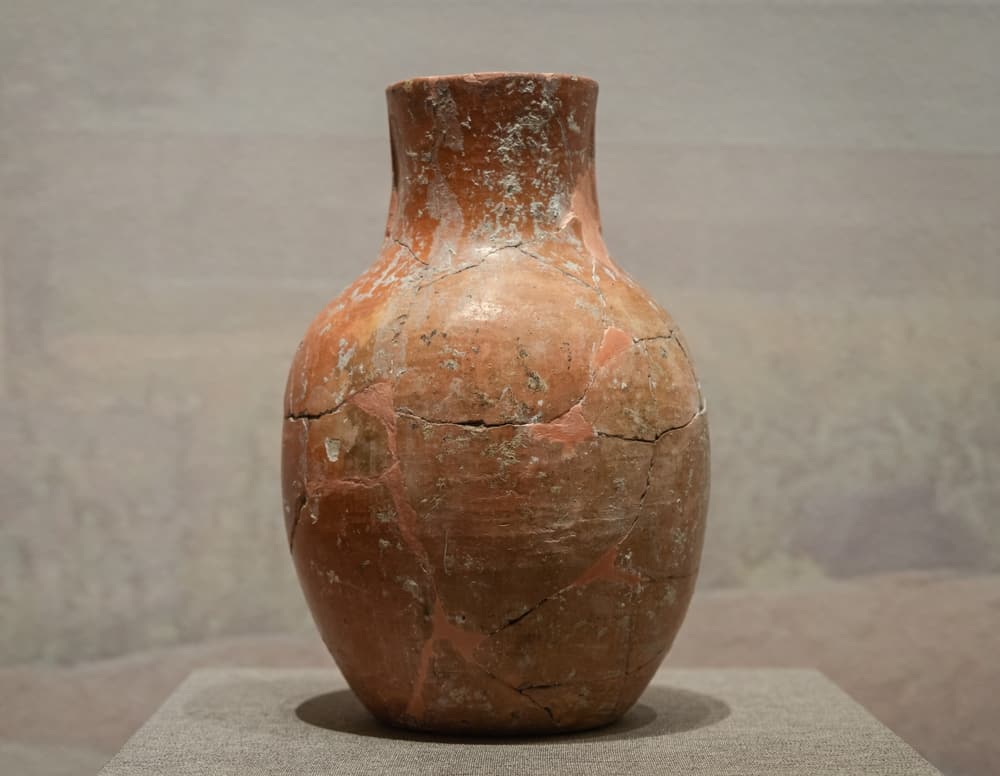We’ve all seen vases and dishes at our grandma’s house and wondered whether they’re worth anything or not. After all, the antique market has always been lucrative, and someone will want antique pottery. But, pottery’s value lies at its bottom. I’m talking about antique pottery marks.
Pottery marks are excellent indicators of pottery’s value. Some pottery companies are sought-after by the antique collecting community, while others are virtually worthless. Also, identifying a rare antique pottery mark could make you a fortune.
So, knowing how to identify a pottery mark and what makers are the most well-known is an excellent way to determine your vase’s value. Let’s see how you can identify antique pottery before moving on to the most famous American antique pottery companies.
How Do I Identify American Pottery?
When you want to identify American pottery, there are a few key aspects that you must check.
The Mark
The obvious one is the mark. After all, that’s all I will be talking about in this article. Finding a pottery mark can be detrimental to finding the actual value of pottery. The mark is usually located at the bottom of the pieces. It can be a simple logo or the name of the company.
With that said, some pottery doesn’t have any marks. These become more difficult to value, especially when you don’t know any famous pottery makers. But, there are a few standard features with every company, which I’ll explain below.
The Foot
The foot of pottery is the rim around its bottom. Usually, the rim’s shape, glazing, or markings on it can help you identify the company that made it.
Some pottery makers opt for dry rims. A dry foot doesn’t have any paint on it, despite the pottery having distinct colors. So, it’ll usually be the color of the clay or a white (almost beige) color. The first brand that comes to my mind is Camark, which combines a dry foot with vibrant pot colors.
The dry foot is very common with companies in Ohio. Also, some will have bars or wedges on the pottery’s foot, which add a more artistic touch.
Of course, many companies will have a glazed foot. Most of them would suspend the pottery on stilts during the glazing process, which would leave stilts marks on it. I’ve found many California companies doing this, and RedWing (which I mention below) implements it on some of its lines.
So, if you find any stilts marks on your pottery, it could be worth big money. That said, it could be challenging to distinguish stilts marks from damage for a beginner. A more straightforward way to determine the value of your pottery is the clay it’s made from.
The Clay
The color of the clay on the bottom of vases can help you understand where the pottery was made. Some states have abundant access to certain types of clay, so companies in these used specific clay colors to make the vases.
- Red Clay
States towards the middle of the east coast commonly used red clay because they had many veins of it. Namely, Alabama, the Carolinas, and Georgia were known for their red clay veins.
Some Canadian companies, like Blue Mountain, also used red clay. Such pottery is very similar to its American counterparts, and they’re often unmarked. So, you’ll need to pay extra attention when you get a piece of red clay pottery.
Many shades of red are used in pottery, from vibrant to mellow ones. Companies like Nicodemus, Jugtown, and Weller (only some lines) are known for their beautiful red clay pottery.
- Yellow Clay
Most yellow clay veins in the US were located in Ohio, so most of the state’s companies utilized it. Weller was an excellent example of well-made yellow clay pottery. That said, the company used all kinds of clay, and all of its pottery is stunning and valuable.
Some Ohio companies that made yellow clay pottery are Roseville and McCoy. But, one of the most well-known was Watt Pottery. The company had an entire class known as yellowware, which was different because of the glazing process.
- Pink Clay
Many companies didn’t use pink clay since most opted for a deeper red color. But, Hull and Royal Copley, along with California pottery makers, are the ones who used pink clay for the base of their vases.
- White Clay
Along with red clay, white (and beige) clay is the most used in antique vases. White clay pottery was primarily made in the mid-south of the US, in states like Arkansas and Texas. Hawaii is also one of the states that opted for white clay.
Beige clay can be primarily found in southwest states, and Native Americans mainly used it. Keep in mind that achieving a beige base is very easy; any pot soaked in water can turn beige. So, be aware of reproductions!
Companies like Alamo and Stangle are very well-known for their white clay pottery, while Acoma has some of the best beige clay vases.
That said, there are many copycats out there regarding antique pottery. So, you’ll have to make sure that you pick up an authentic American piece of pottery.
The Weight
While this might seem odd, the best way to ensure that your pottery is made in the US is by its weight. That is if the pot doesn’t have any marks.
American pieces tend to be much heavier than copies. That’s because most fakes come from Japan and date back to the 1940s-1960s. These are usually much lighter than the American originals.
Keep in mind that the absolute weight isn’t an indicator; you’ll have to add the pottery’s size into the equation. So, just because a plate isn’t heavy doesn’t mean that it’s an Asian import.
A great way to not get confused with this is by checking the bottom and the walls of a pot or a plate. If the base feels heavy and the walls are thick, you’ve got an authentic piece.
Another great way to identify an antique pot is by looking at the numbers on the bottom.
The Numbers
Many vases will have a unique number on the bottom. This can help you pin down who made that pot and if it’s a fake or not. Of course, just like the maker’s mark, some pottery doesn’t have any numbers, so you’ll have to guess the company from the clay used and its weight.
But, a real American piece will usually have three numbers. This isn’t necessary; some companies used two numbers while others used four. Either way, the numbers must be molded to the bottom, not handwritten. Handwritten numbers usually indicate that the pot is an import.
Depending on the maker, the pottery might also have the company’s name. I’ve also seen vases from RedWing that use a letter, dash, and number format – an example would be M-3333.
That said, the best way to identify the pottery’s maker is by looking at the number format and the clay used. Once you’ve got an idea of where the pot was made (because of the clay color), the numbers will pinpoint the exact maker.
The Glaze
If you’ve ensured that you’ve got an antique American pot in front of you, you can check its glaze to know when it was made. That’s because most glazes are synonymous with a specific era. And most companies were active during particular decades, so the glaze will allow you to spot your pottery’s maker.
Companies used a standard glaze during the late 19th and early 20th centuries. So, the most common look of pottery of that period is a brown finish. Most of Weller’s fall in this category, along with makes like Peters and Reed, and Rozane.
During the 1910s and 1920s, American pottery makers opted for hand painting and the use of pastels. Also, they gradually stopped implementing the shiny finish, going for a matte one. Some companies during that period are Rookwood and Newcomb, both of which I mention below.
In the following decades (the 30s-60s), pottery makers like Hull, Van Briggle, and Roseville reverted to shiny glazes. But, most shiny vases from that era aren’t as valuable today. This is probably true because the original shiny pottery from the early 20th century sells for very high prices.
That said, many companies would implement their unique style no matter the era. For example, drip glazes were often used by Winart and Fulper, amongst other makers. Other notable glazes are Camark’s crystalline glazes, Haeger’s lava glazes, and Ohio companies’ mottle glazes.
Apart from these, some makers have unique identifiers that are usually present in one or several lines.
Unique Identifiers
I won’t go over every identifier of each company since there are so many. But, every maker has something unique about its vases. These are often visible on the bottom of the vases or the handles and outer shell. Also, some companies like Mosaic featured specific clay (white clay) and a shiny glaze. These are very distinct due to their weight; they’re extremely heavy.
An example of unique identifiers includes seam marks towards the foot of the vases. More contemporary makers would implement a sloppy glaze, which would run over the edge of the dry foot.
Is There an App to Identify Pottery Marks?
Unfortunately, no app identifies pottery marks. Unlike other antique items, identifying a pottery mark is very simple; you have to match it to the maker’s logo. Also, the factors I mentioned above are giveaways of a piece of pottery’s maker.
But, there are many communities online which will happily help you identify your pottery’s mark, which can be found mainly on Reddit. Also, one of the best ways to get an appraisal on your pottery and identify its pottery mark is by taking it to an antique or pawn shop.
Or, instead of having the hassle of doing all that, you can find some of the most well-known pottery marks below.
Valuable Pottery Marks
While I can’t include every American pottery mark here, I tried to find the most valuable ones according to online sales. I’ll also give you a small history lesson about each company so that you identify the mark on your own.
1. Alamo Pottery
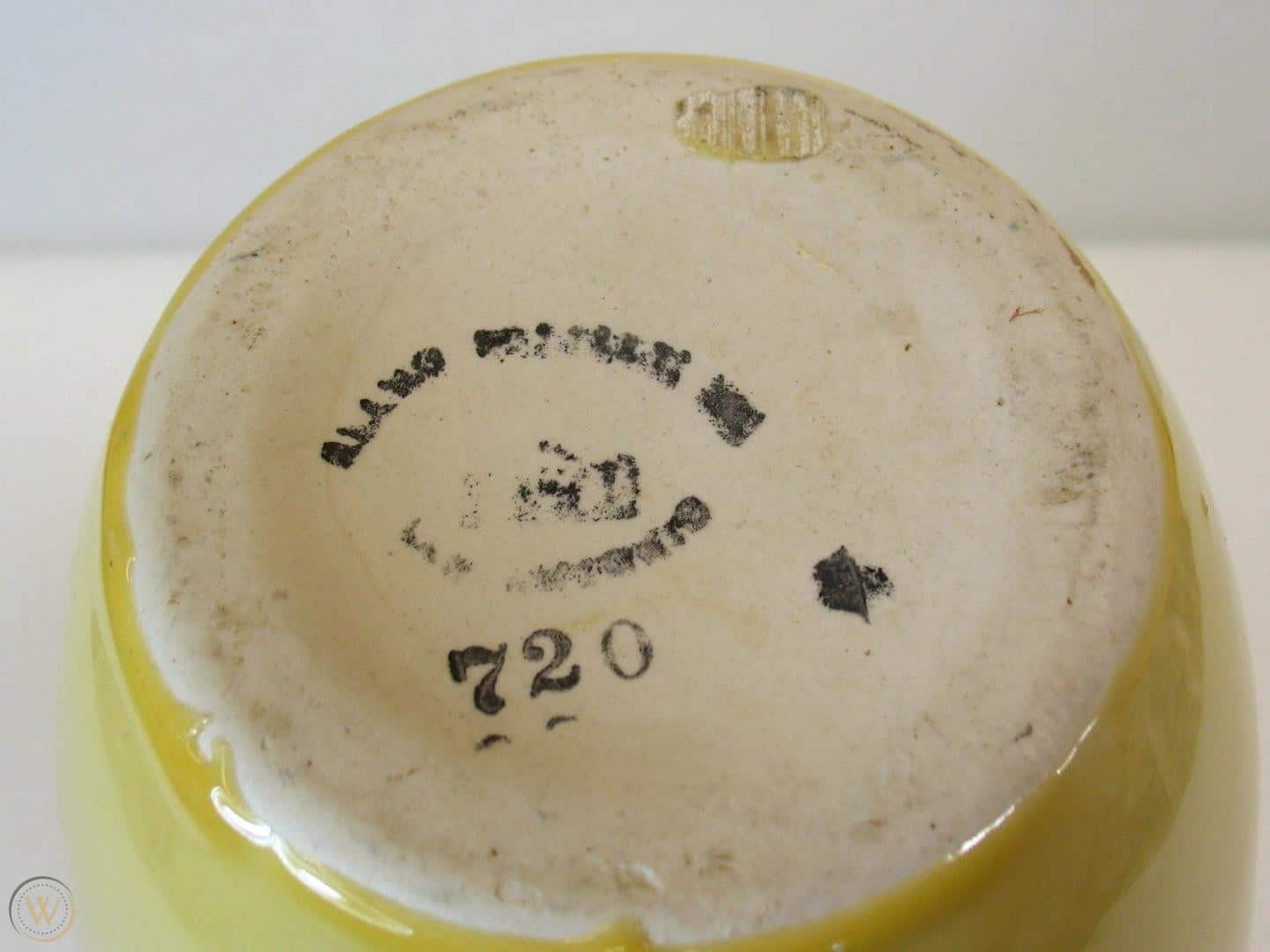
Alamo Pottery was a Texas-based maker which was run from San Antonio. The company would expand to Hondo, Texas, before being sold to Universal-Rundle in 1951 (7 years after it started). The signature Alamo mark is the company’s name in blue or black. The black version is older than the blue one.
Alamo Pottery was mostly known for its artistic pottery, which was usually smaller than most others.
2. Arequipa Pottery
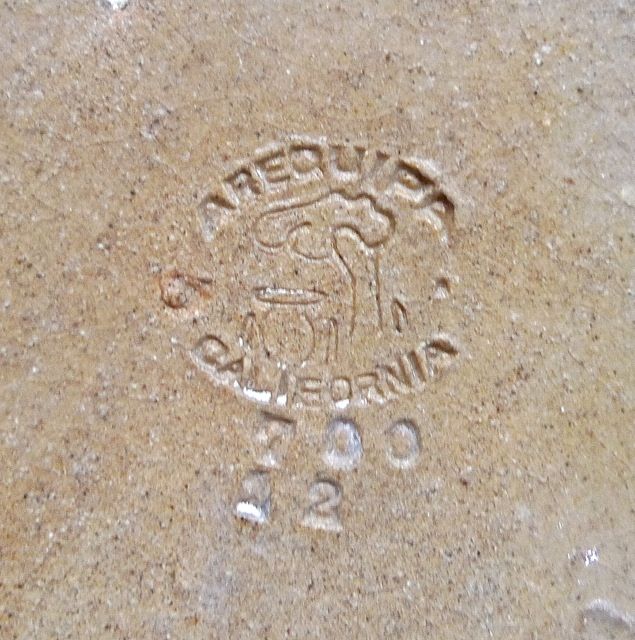
Arequipa Pottery is one of the few California-based makers that’s valuable today. The company was in business for seven years (1911-1918). Its popularity is mainly attributed to Frederick Hurton Rhead, a well-known potter. The company’s mark is the company’s logo, with its name being visible.
Most valuable Arequipa pottery is tall and has full, vibrant colors. They usually sell for a few hundred dollars, but some vases can go up to $10,000 if they’re pristine.
3. Blue Ridge Pottery
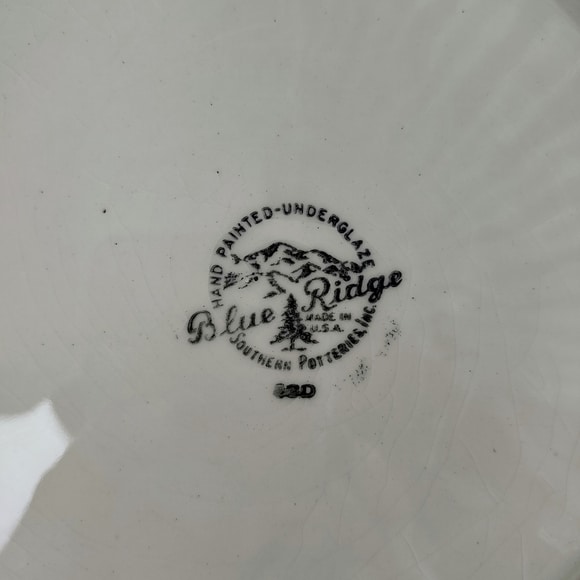
Blue Ridge Pottery was a part of Southern Potteries, and it operated from Erwin, Tennessee. While Blue Ridge’s parent company began in 1920, the maker wouldn’t start producing dinnerware until the 1930s, with production stopping in the late 1950s. Most of Blue Ridge’s vases were hand-painted under the glaze.
The pottery mark for Blue Ridge differs; sometimes, it used the Southern Potteries name while it also used its own. The mark also features a pine tree.
4. Fulper Pottery
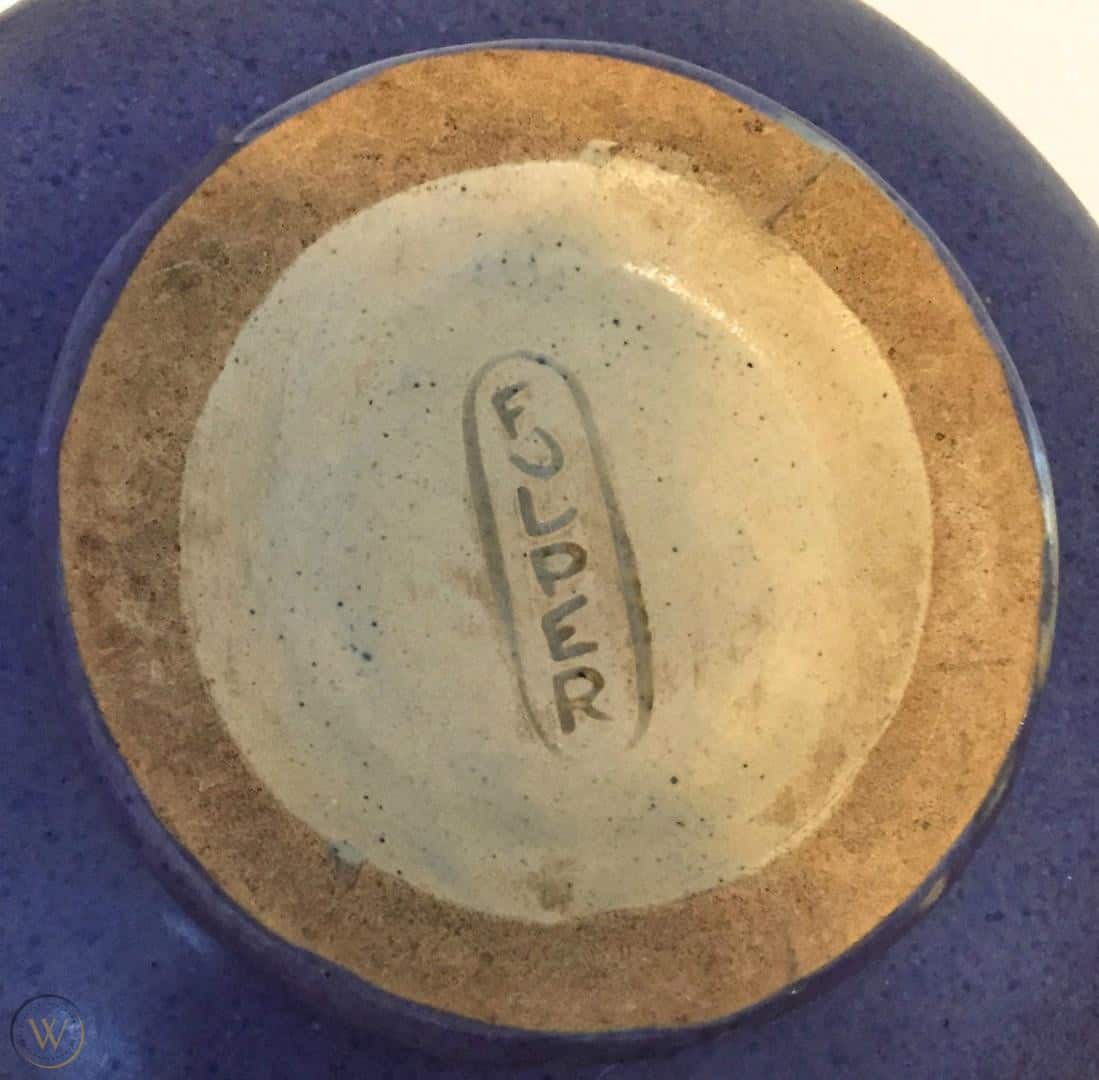
Fulper Pottery was one of the longest-lasting potters in the US. It began in 1814 under the name Hill Pottery. It was later renamed Fulper in 1899, and it started producing its artware ten years later. The maker operated out of New Jersey, with most art pottery selling for $50-$300.
The most commonly sold pieces of ceramic pottery are large vases with incredible glazes. The maker’s mark is simple; an oval with Fulper written inside vertically. We’ve also seen Fulper vases with the mark written horizontally.
5. George Ohr Pottery
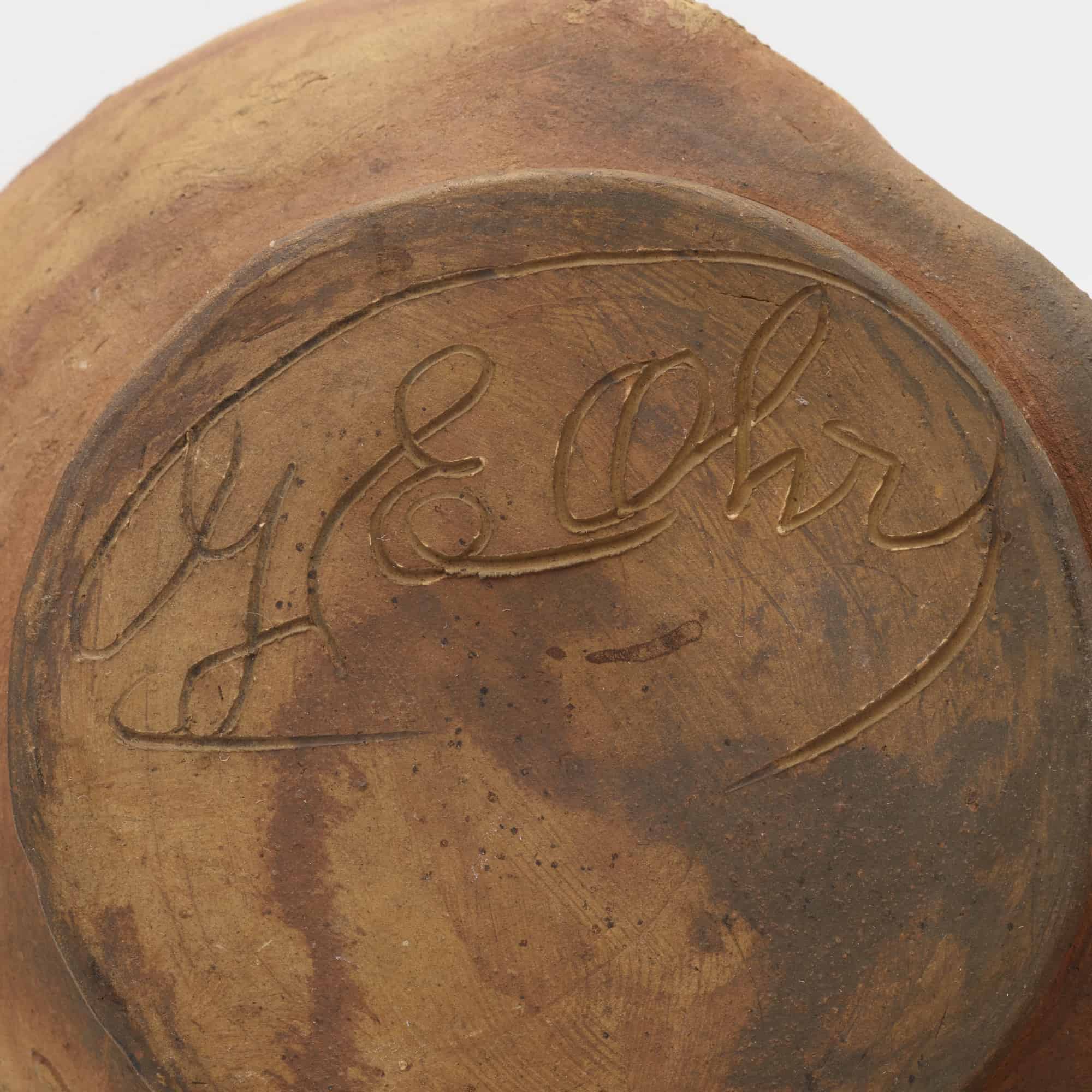
George Ohr Pottery was just one man working from Mississippi. George was an excellent potter, and he worked throughout the late 1800s and early 1900s. His vases are unique, with most featuring metallic glazes, unusual shapes, and thin walls.
Some of his pieces have been sold for tens of thousands of dollars. But, many have created perfect replicas, which are worthless. This is primarily down to how simple the mark is; every piece of pottery is stamped with G.E. OHR, Biloxi, Miss.
6. Grueby Pottery
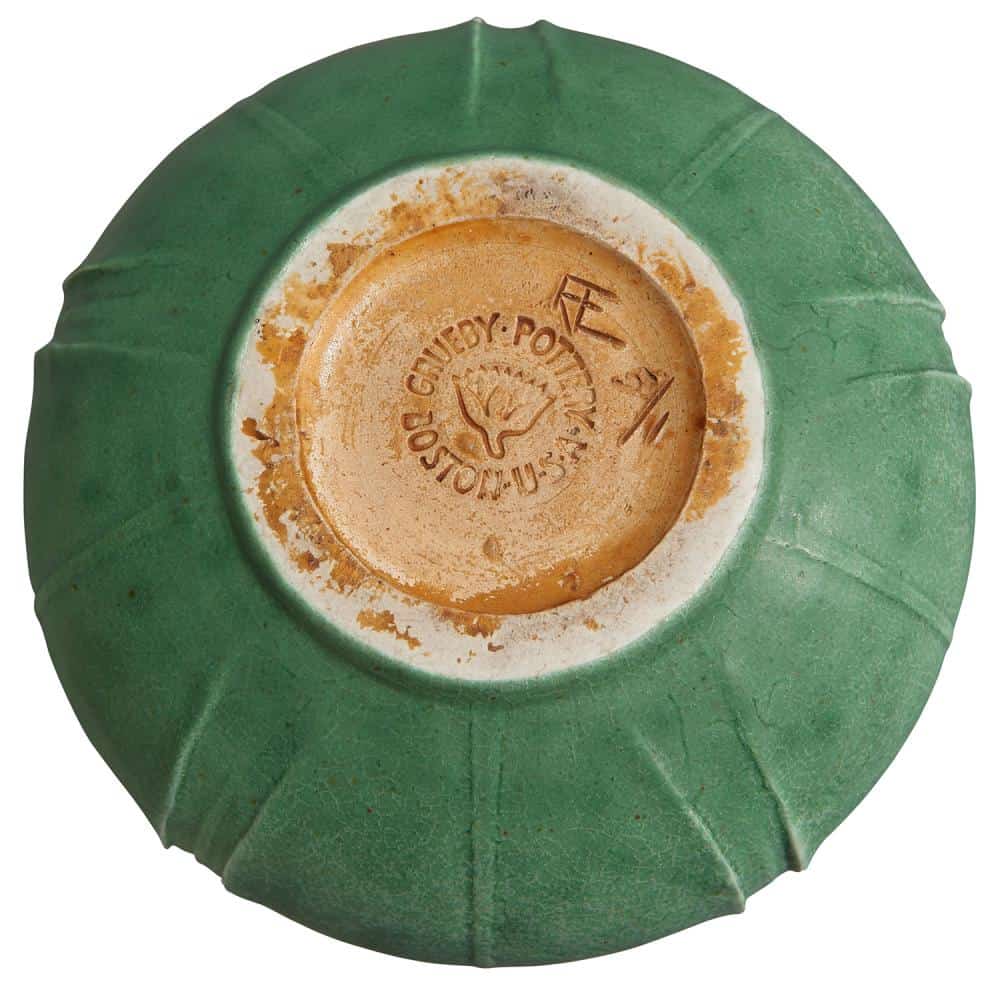
Grueby was a Boston-based maker that was named after William Henry Grueby. Most Grueby vases are distinct for their matte green glaze. The company was going well for the first few years until it filed for bankruptcy in 1909, 12 years after it began. It would close down for good 11 years later.
Because of this, there are only a few pieces of Grueby pottery around, making them very valuable. Some have even sold for $10,000! The most common Grueby mark is a round stamp with a three-leaved flower in the middle.
7. Hampshire Pottery
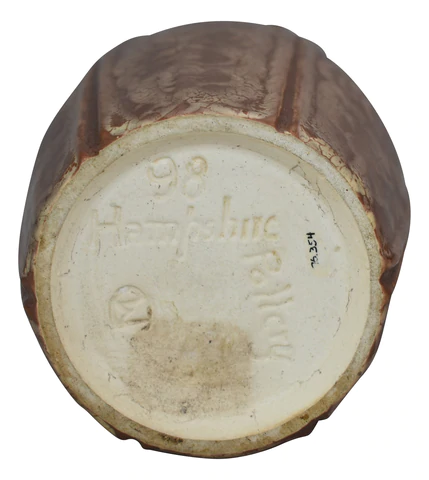
Hampshire Pottery is one of the oldest ones on our list, beginning in the early 1870s in New Hampshire. It would stop all production in 1917. Unlike other vases from that period, Hampshire ones sell for up to $2,000 due to their lack of originality. Most pottery can sell for a few hundred dollars if you find the right collector.
Most Hampshire pottery was dinnerware, with some falling into the category of artware. The maker’s mark is a round red stamp with the maker’s name.
8. Hull Pottery Company
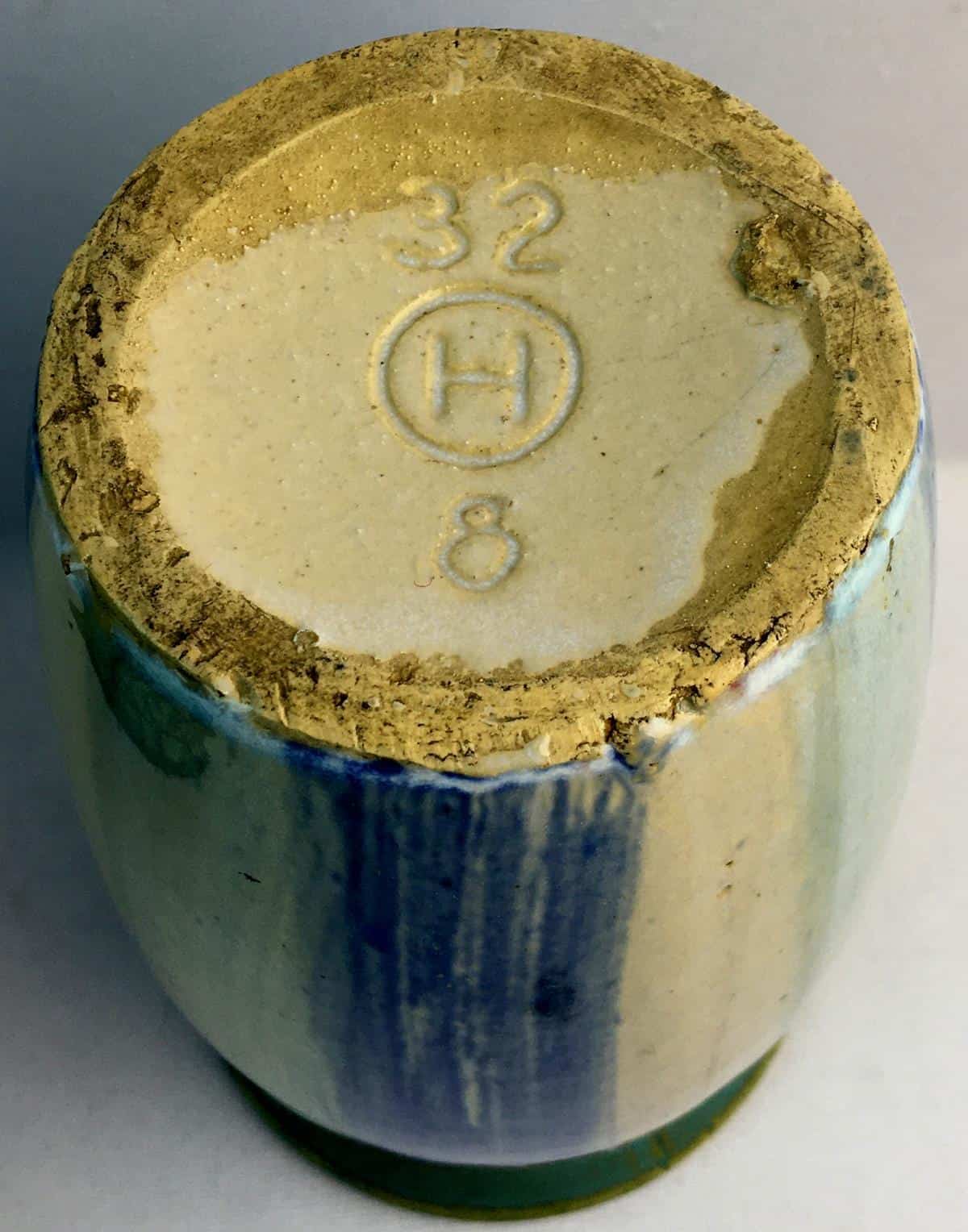
Hull Pottery Company was a long-lasting maker, operating out of Ohio for 81 years (1905-1986). The maker’s original name was A. E. Hull Pottery Company, and it was changed to Hull Pottery Company 47 years after it started.
Hull Pottery’s mark was initially an H in a circle. But, it was later changed to “hull” without the capital H.
9. Marblehead Pottery
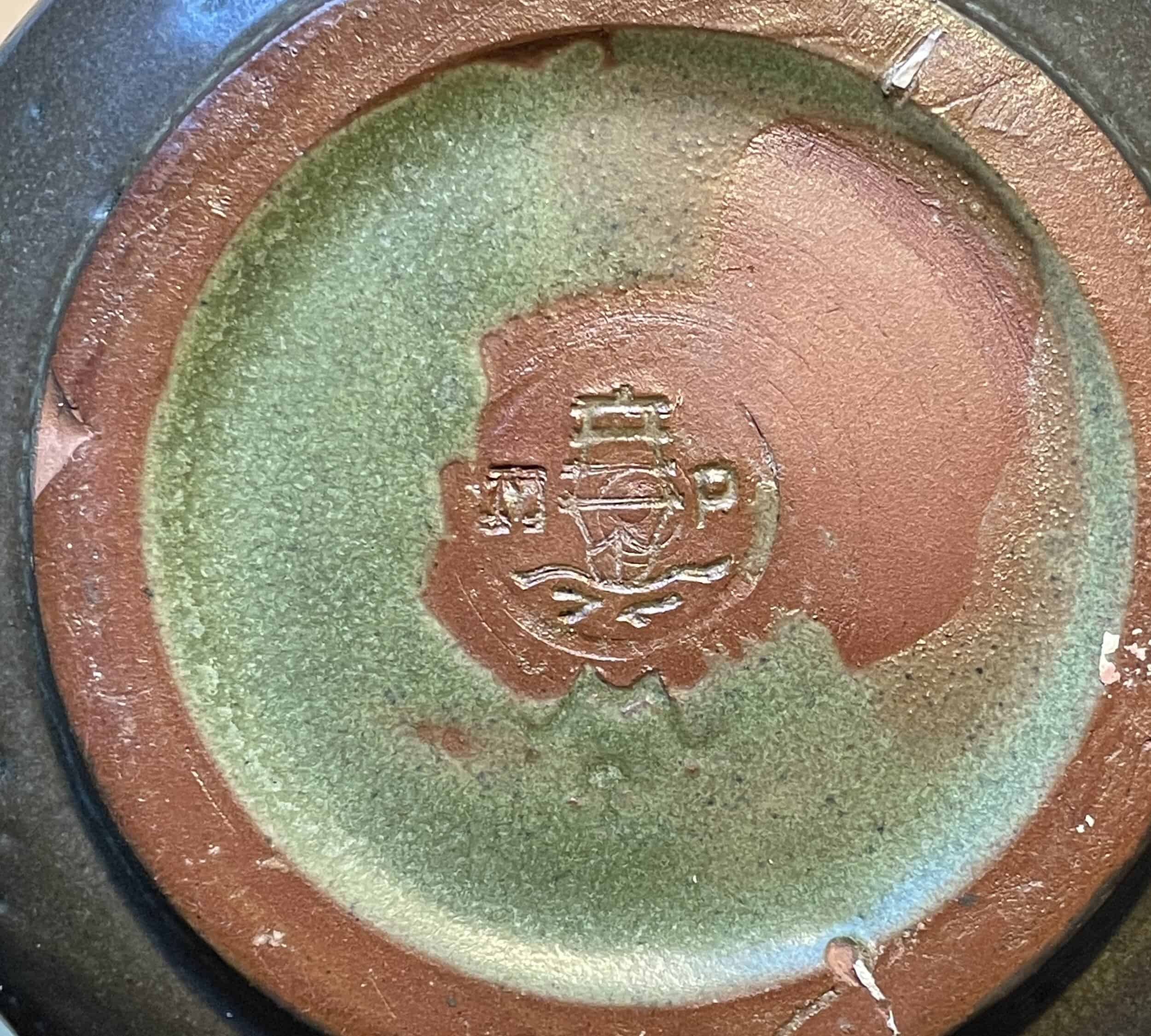
Marblehead Pottery started in 1904, and it has a fascinating story. It began at a women’s clinic as a therapeutic program. While they did a lot of handworks, pottery was the one that prevailed as the best. Some Marblehead pottery can sell for $10,000, with many selling for around $2,000.
The company’s mark is a stamped ship, with Marblehead written below it. To be frank, it’s one of the best-looking maker marks we’ve seen so far.
10. McCoy Pottery
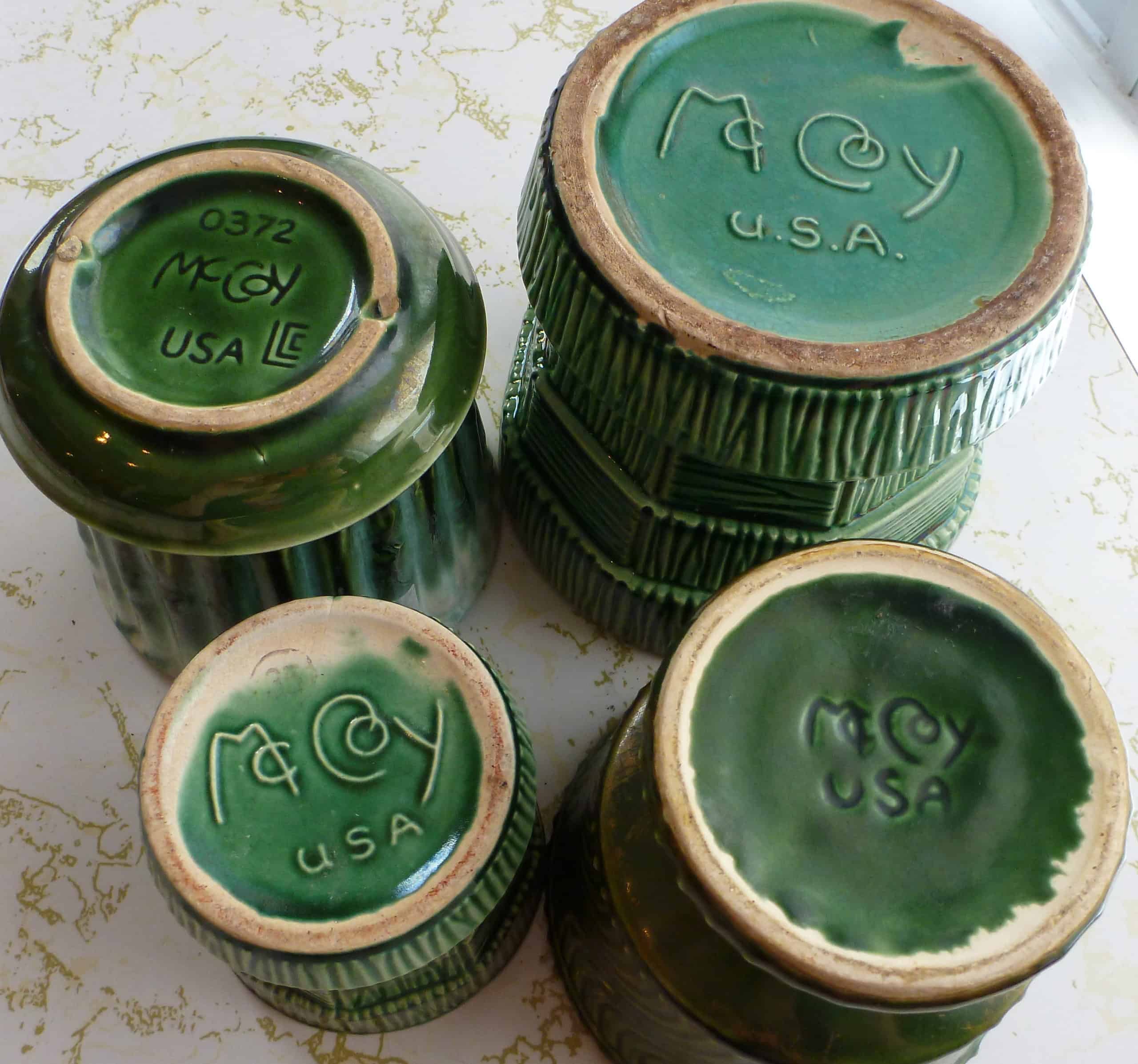
McCoy Pottery is a very old maker, starting in 1848. While its vases aren’t the most valuable, we couldn’t keep them out of our list because they ran for more than 140 years. The company started in Ohio.
The company’s mark is one of the simplest; it’s just the name McCoy, with the c interconnecting with the M.
11. RedWing Pottery
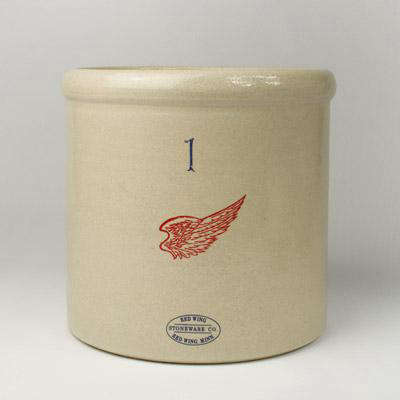
RedWing Pottery was based in Minnesota, and it’s known for its earthenware and china dinnerware. The manufacturer would end up closing in 1967, but it later reopened in 1996, with many of its productions being limited editions.
The RedWing mark changed over the years, but most pottery will have the logo and date as a stamped mark.
12. Rookwood Pottery
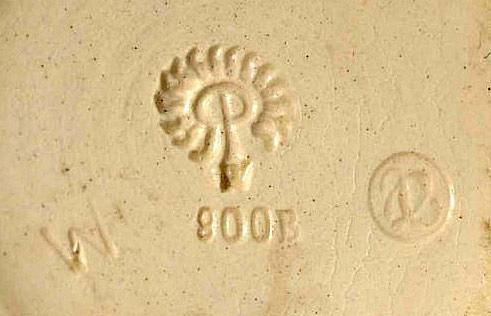
Rookwood was once considered the most well-known American pottery maker. This is why some of its more pristine vases can cost more than $100,000, with several having the potential of costing more than $10,000. The company began in 1880, and it lasted until 1967. Since 1982, the company has been producing some limited edition pottery.
Rookwood has had different marks throughout the years. At first, the company used its initials “RP” and one flame for each year from 1886 to 1900. Then, the company opted for Roman numerals to date the pieces.
Some pieces of pottery from Rookwood had letters that indicated something unique about that piece. For example, “P” would serve as porcelain marks.
13. Roseville Pottery
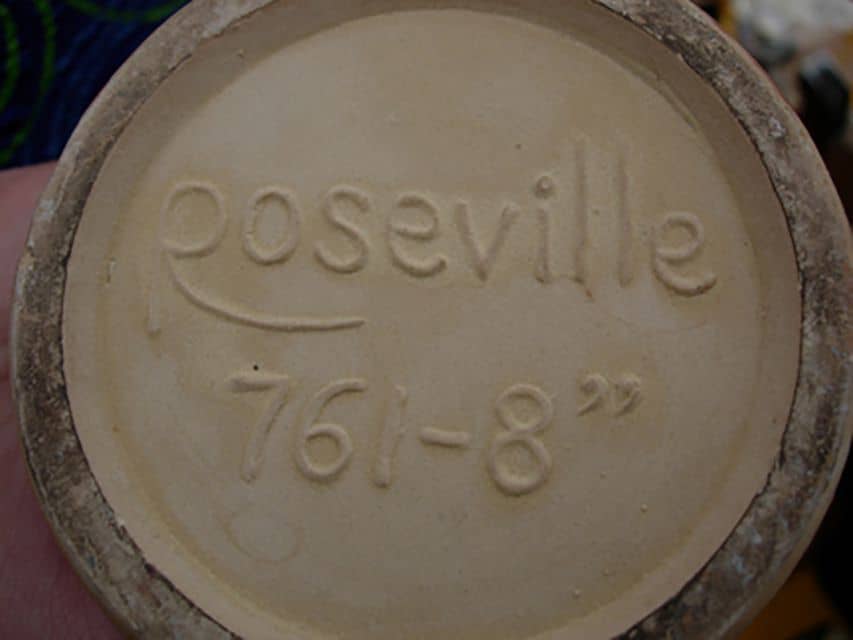
As the name suggests, Roseville Pottery began in Ohio, and it was one of the best pottery manufacturers in the US. Its artware was made from 1890 to 1954 when the company stopped production. Most of its pottery sells for less than $100, but some pieces are commonly sold for up to $2,000. Avid antique collectors will swarm you if you have a rare Roseville piece.
Roseville’s mark is very simple; it’s the company’s name in the trademark Ohio yellow clay, with the R having a long tail.
14. Royal China Pottery
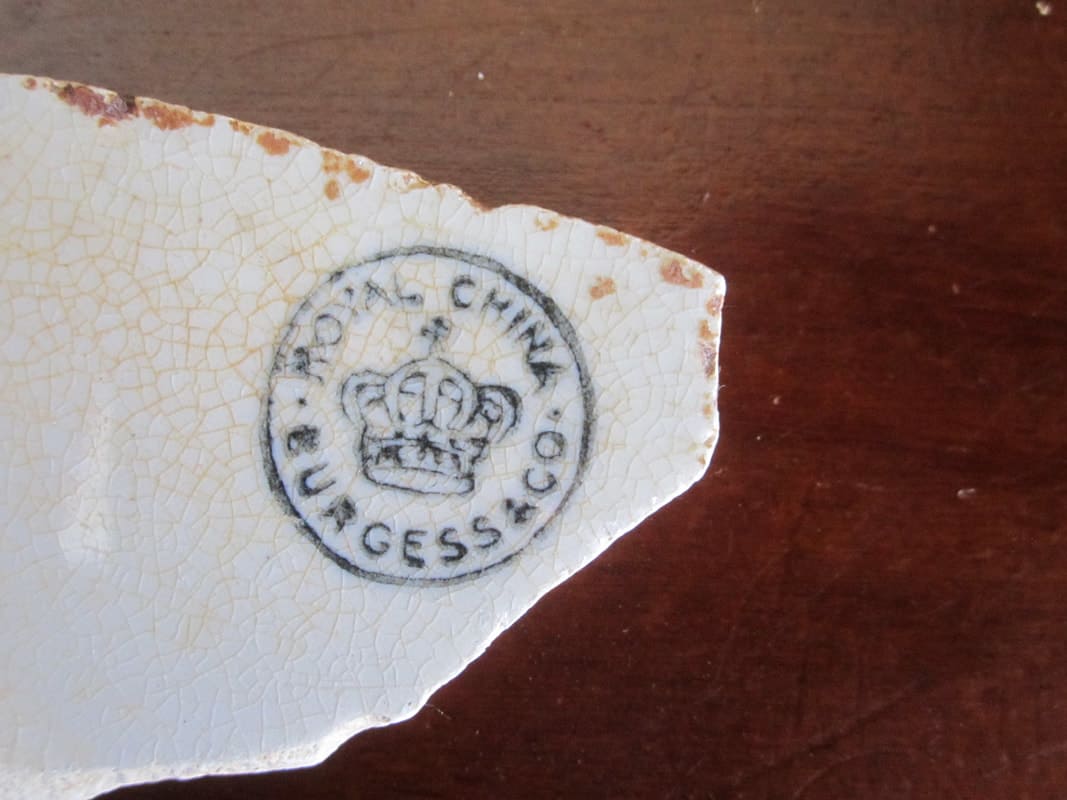
Royal China Pottery is mainly known for the dinnerware it manufactured from 1934 to 1986. The company was run out of Sebring, Ohio, and it had some of the best chinaware in America’s history.
The maker’s mark was a blue crown on top of a circle surrounded by Royal China’s name. Some models had the Currier and Ives mark, the maker’s most popular pattern.
15. Saturday Evening Girls Pottery
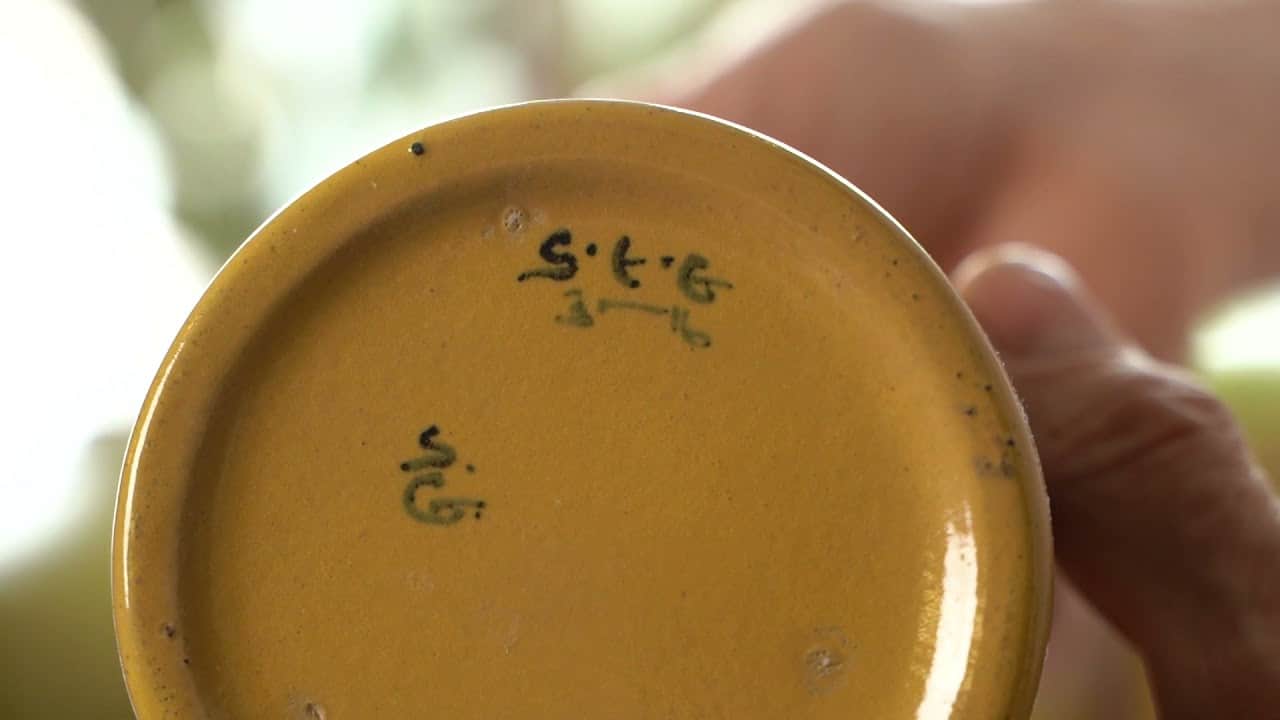
Saturday Evening Girls Pottery was in production for 35 years (1908-1943). While most of its pottery sells for a few hundred dollars, larger pottery pieces like vases or large bowls have sold for thousands. The company was based in Massachusetts, and it was initially named Paul Revere Pottery.
This is why its mark features Paul Revere on his horse, along with Boston or Paul Revere Pottery.
16. Teco Pottery
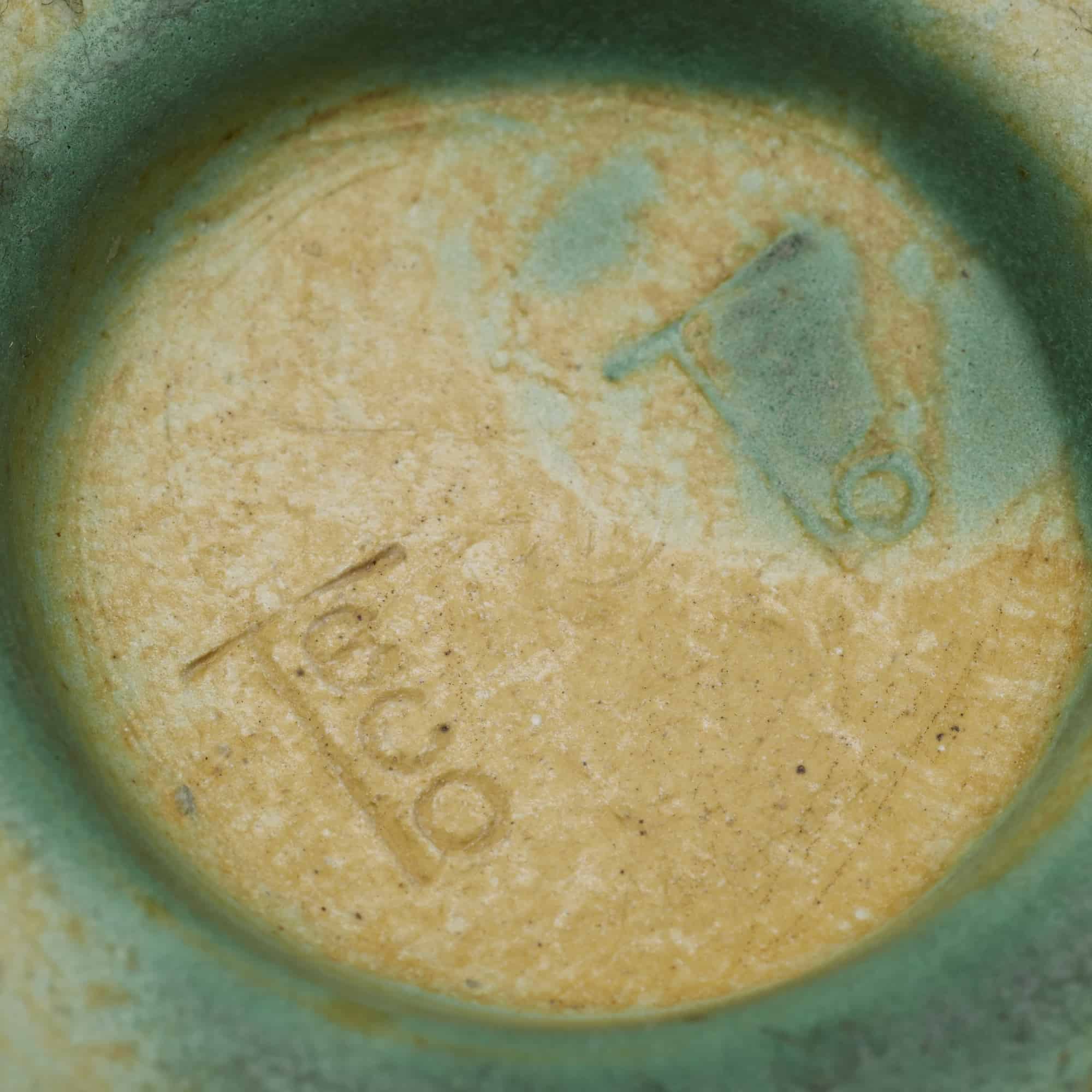
Teco is the most elite of American pottery. The company began in Illinois in 1879, with its pottery starting production in 1902. Some of its best pieces of pottery sell for more than $10,000. Most vases have a light green color, and they come in a variety of shapes, with each being numbered.
Speaking of which, Teco’s mark features its logo, with the Teco being spelled vertically and the “eco” part being inside the right side of the “T”. Also, you’ll usually find the number of the shape next to it.
17. Van Briggle Pottery
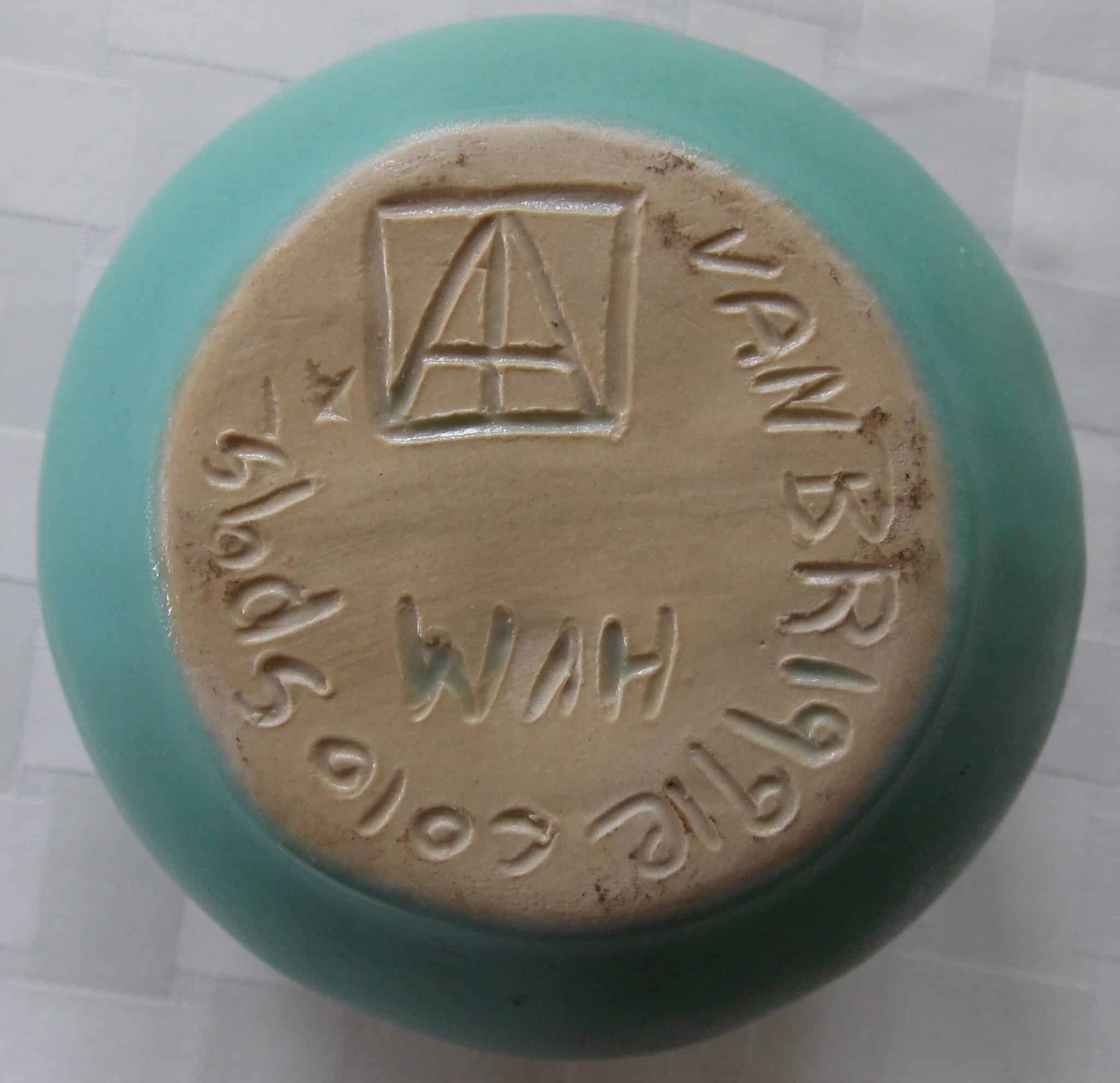
Van Briggle Pottery started in 1899 in Colorado. It’s one of the only pottery manufacturers still in business today, with its distinctive marks starting in 1920. Many Van Briggle pottery can sell for more than $1,000.
Pieces of pottery that were made before 1920 will feature the Van Briggle name and the year of production under it in their marks
18. Weller Pottery
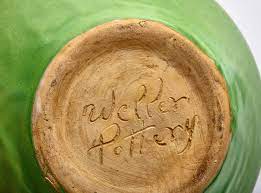
Weller Pottery is easily the most famous American pottery manufacturer. The company started in 1872 and lasted until 1948. The maker was established in Ohio, and it was the largest pottery maker in the world at one point. Most vases sell for less than $100 due to their vast supply. The best of the best can sell for more than $2,000.
Weller’s mark included the initials of the potters, or the product’s names, and the Weller name.
Final Thoughts
Antique pottery can be one of the most valuable pieces for an avid antique collector. Its prices can range from a few dollars to tens of thousands. So, you’ll need to know how to identify them correctly and learn some info about the most famous manufacturers.
You’ll have to check for a maker’s mark on the pottery’s bottom. If there’s none, you can check how heavy it is, what color clay it’s made from, the foot’s design, and the glazing used to identify the maker. Once you’ve got an idea, the internet is your best friend for finding who the maker is.
And, who knows. Maybe you have your hands on a highly sought-after Weller or Roseville vase.
